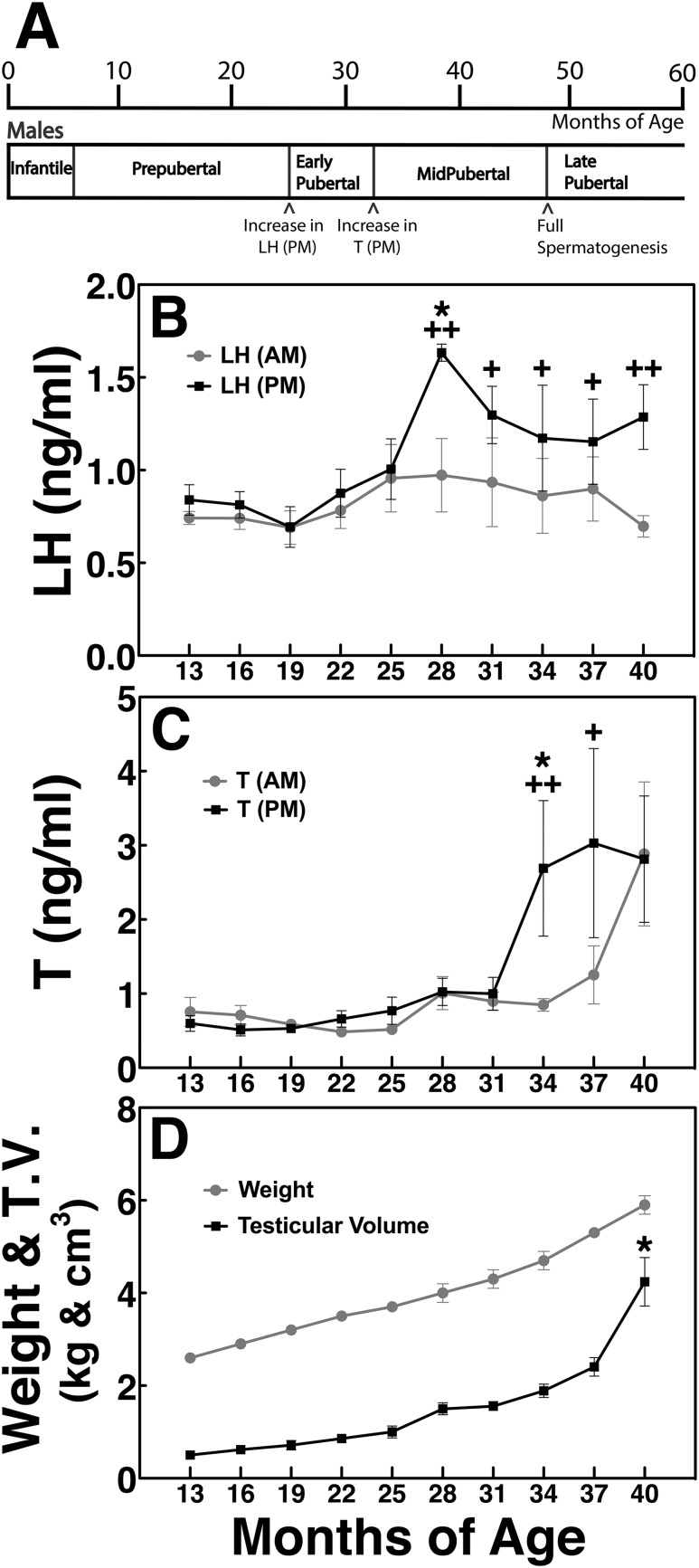Figure 1.
(A) Developmental stages in male nonhuman primates. Assessment of physiological and hormonal measurements [(B) am and pm LH, (C) am and pm testosterone, (D) body weight and testicular volume] has permitted us to categorize the male pubertal process into the following stages: prepubertal stage (7 to 25 mo of age), early pubertal stage (28 to 34 mo of age), and midpubertal stage (34 to 48 mo of age). The prepubertal stage is defined by low am and pm LH and T levels (≤1 ng/mL for both) occurring at 7 to 25 mo of age and a testicular volume ≤1 cm3. The early pubertal stage is defined by an increase in pm LH levels occurring between 25 and 28 mo of age and a very small increase in testicular volume. The midpubertal stage is defined by consistently elevated pm LH levels, elevated pm T levels, a small increase in testicular volume starting at ∼34 mo of age, and subsequently elevated am T levels followed by a rapid increase in testicular volume occurring between 37 and 48 mo of age. Note that pm LH levels are consistently higher than the am LH levels in all three pubertal stages; however, pm T levels are higher than the am T levels in the midpubertal stage only. *P < 0.05 vs previous stage; +P < 0.05, ++P < 0.01 vs am level. T.V., testicular volume.

